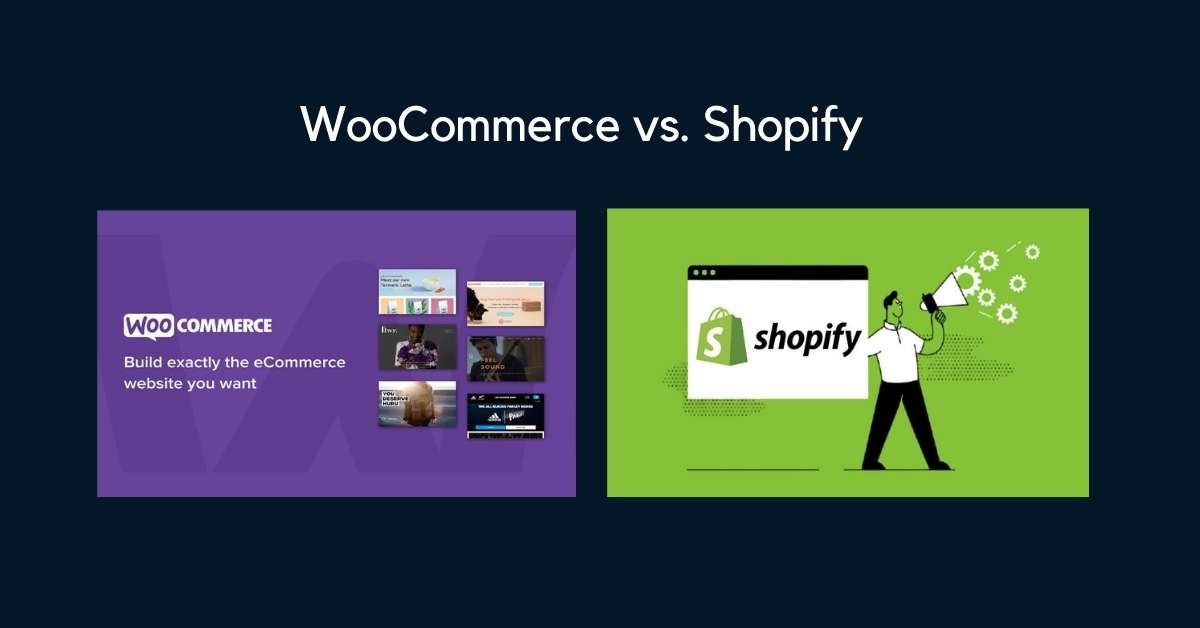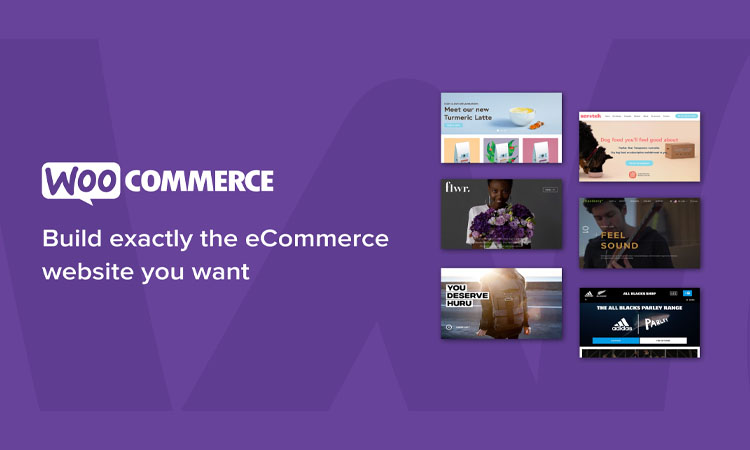There are numerous providers to select from & each has its own unique benefits.
However, for companies that do not depend on retail to be their major source of revenue, the 2 most popular options are WooCommerce and Shopify.
If you are one of those trying to make a decision between WooCommerce and Shopify, it is crucial to know the difference between them.
Here, we will discuss both WooCommerce and Shopify in reference to their features and pricing to assist one make an informed choice.
WooCommerce vs. Shopify in the year 2021: Which one is better?
When it boils down to this, a commerce platform that is correct for your business depends upon your retail requirements and goals.
If you are one of those new to eCommerce and do not look to spending a lot of time and money on the development, Shopify is a good choice. It does not permit various customizations but allows one to sell with minimal tasks.
Moreover, you can even optimize websites with assistance from Shopify SEO professionals. If your existing website functions on WordPress and you are comfortable managing and installing new plugins then WooCommerce can be preferred by you.
And as it is free to install, one has the option to experiment with the same before deciding whether or not to make payment for the extensions.
When you search via Google for reviews regarding Shopify and WooCommerce, you will see a number of opinions from distinct business owners.
Though such insights can be useful, the actuality is that whether you select WooCommerce or Shopify, it will all boil down to some core differences.
For example, the major distinction between Shopify and WooCommerce is Shopify is all one solution regarding eCommerce that is designed to endow everything you require to start off online.
Shopify is designed to take technical and complicated aspects out of the online business & replace the same with a simple utilize tool. You can set up your Shopify store and run it in a matter of just a few minutes.
However, this even means that you are not going to avail much of granular control over your website.
On the other side, in case you are looking for some customization option then WooCommerce is the best self-hosted software for your eCommerce business.
It means that you can simply tap into your code as well as access different store parts.
WooCommerce endows you with a great lot of freedom to form almost anything in your store that is important for your team. Also, it means that you can easily run your company in conjunction with the WordPress blog.
However, when comparing WooCommerce and Shopify, note that the freedom that you avail of from WooCommerce actually comes with a price.
In a simpler term, you require to know how you can handle or manage the technical angle of your website for keeping it completely safe.
If you are just a beginner, you do not require looking at things such as web hosting & hosting provider details. In such a case Shopify is a better option.
In case you are looking for freedom to experiment on your website and you are using WordPress, then you can choose WooCommerce.
Shopify is your best choice in this situation if you want an all in 1 package for your store that immediately gets running with good features as well as apps.
WooCommerce is a great choice for those who already have their eCommerce website in WordPress and do not mind taking a lot more control over your online store.
Still, you are not sure about the choice, which you should pick? Let us simply break down WooCommerce and Shopify in reference to their features and pricing.
Shopify: Features and price
Shopify gets hosted by the e-commerce solution, which means that company hosts & sets up the websites for business owners.
Dissimilar to solutions that are self-hosted, one does not require to have a server or install the CMS. In place, you only sign up, select a domain & pay month on monthly fee for maintaining and hosting it.
It means though the setup is easy and quick, it does not permit customization in reference to appearance and themes. Here is what you should also know:
Price: $ 9 – $ 179 per month
Shopify provides 4 distinct pricing plans – Basic, Lite, Pro & Unlimited, at $29, $9, $ 79 & $ 179 per month respectively.
With the lite plan, you do not actually build any online store.
You only utilize Shopify’s services to include the ‘buy now button to existing sites. This might be all you require if you are just planning to sell limited goods and want to accept payment through a credit card.
From there, all the other plans involve online stores and additional functionality for higher sales volume and larger stores.
Features
One of the advantages of utilizing Shopify is it provides extensive payment options irrespective of the plan you opt for.
With maximum platforms accepting payment through credit cards, note that credit cards come with additional charges.
However, it is even crucial to remember that Shopify attracts a transaction fee for every sale conducted.
The charges range anywhere between 2.4 – 2.9% basis on the plan you select. Also, Shopify provides features like reporting, gift cards, and multiple shipping options on their higher-level plan.
Thus, if these are the crucial features required by your store, Shopify offers them, however, be sure to select the unlimited or pro version.
WooCommerce: Features and price
WooCommerce refers to a WordPress plugin. It means that if your website already is functioning on WordPress, then installing it is all that you require to do to begin selling.
Dissimilar to Shopify, you will require to do a few of the work for setting up your online store. This said, if you are experienced with WordPress, then it is a simple procedure.
Price: free
One of the greatest drawbacks of WooCommerce is that its basic installation is free. However, you most likely require to pay for some features.
WooCommerce provides a ton of extensions for plugins that give it added functionality such as an additional gateway for payment, shipping options & product add ons.
Few of such extensions are completely free while the rest cost an annual fee of nearly $ 49 -$ 79.
Considering everything, an amount of $ 79 per year is still thoroughly cheap for the eCommerce store accepting credit card payments.
Other expenses you might require considering are for the purpose of development.
WooCommerce has about 39 basic themes to select from, but if you require a more custom appearance for your online store, you will require hiring a developer or designer for creating it.
Features
Out of the box, WooCommerce is a completely basic eCommerce podium.
It just accepts PayPal as a payment mode and does not offer various flexibility for any individual product.
This said, with various extensions available, you will likely be able to include any added functionality you require. You just require to be prepared to pay for the same.
WooCommerce vs Shopify: Know the Pros & Cons
Both of them even have their own set of strengths as well as weaknesses. Let us go through the pros and cons:
Shopify : Pros & Cons
Shopify Pros :
- You know exactly how much you will be making a payment every month & the pricing is fair.
- There is accessibility to various applications to extend your online store.
- The themes are beautiful and plentiful.
- Shopify manages everything in the right manner for you from security to hosting.
- It takes only a few minutes for you to launch the store.
- Support is one of the best in the market.
Shopify: Cons
- You do not have a lot of control over your website.
- Customization is way better considering other platforms.
- You are stuck with a monthly payment that would be higher.
WooCommerce : Pros & Cons
WooCommerce : Pros
- WooCommerce provides complete control and customization.
- WordPress has a massive community online.
- Plugins and themes are endless as anyone can make as well as sell them on the online portal.
- WooCommerce is easy to configure on WordPress.
- WooCommerce plugin completely is free.
WooCommerce: Cons
- WordPress comes with just a little learning curve.
- WooCommerce is more costly because of themes, plugins, and hosting.
- You are stuck with responsibilities like management of security to hosting and back up to maintenance.
FAQs regarding WooCommerce vs Shopify
Listed below are answers to a few of the continuously asked questions regarding WooCommerce vs Shopify that users ask about.
Q1. In what way is WooCommerce different when compared to Shopify?
Shopify provides a platform as a service. They offer software & website hosting for your store and take good care of security, backups, and maintenance.
On the other side, WooCommerce is nothing but a self-hosted platform for your eCommerce website.
You will require a WooCommerce hosting account as well as a domain name to manage your store online on your own.
Both the platforms permit you to simply sell products online, avail payments through the PCI compliant 3rd party payment platforms & manage the inventory.
Q2. Which is more popular, WooCommerce or Shopify?
WooCommerce is the world’s most popular eCommerce podium. As per Builtwith, the platform is utilized on twenty-seven percent of well-known one million sites, followed by the platform Shopify, which stands at twenty-one percent.
WooCommerce runs on the top of WordPress, which actually is a popular site builder powering over 42 % of all sites on the internet.
Q3. Can WordPress be used on Shopify?
One can utilize Shopify Lite using WordPress just by installing Shopify’s button of buy now. This implementation takes the users to the cart of Shopify for completing the checkout process.
However, their implementation may be a little tricky and might not provide a good user experience.
In case you are using WordPress, ensure that there exist plugins such as WPForms, which enables the business to accept online payments without having to install any shopping cart plugin such as WooCommerce.
Q4. What are a few alternatives to WooCommerce & Shopify?
WooCommerce and Shopify are the 2 top eCommerce podiums on market. Ecommerce services that provide platforms as services wherein Shopify involve Squarespace, BigCommerce, Wix, and others.
WordPress plugins that one can utilize as WooCommerce alternatives are WPForms, MemberPress, Easy Digital Download & others.
Q5. Which eCommerce platform is highly flexible?
WooCommerce provides high flexibility owing to a larger extension library. This runs on top of WordPress.
This means it can be used for business websites and blogs at the same time. Works with all the mail platforms such as Mailchimp, Constant Contact, and others.
One can even simply optimize websites through SEO plugins such as Yoast SEO or All in one SEO. Also, you get more WooCommerce themes through the free WordPress theme store.
Q6. Who can use Shopify?
- It is best for those who prefer 24 X 7 support & things such as security.
- Anyone who requires a site lives in a short span of time with restricted technical know-how.
- Anyone looking for sleek templates that are simple to customize.
Q7.Who can use WooCommerce?
- Best for those looking to set a passion project that needs a lot of personalization.
- For those wanting to form a large-scale online selling store in various regions.
- For those who are competent technically and require great control over website hosting and design.
Shopify vs WooCommerce: Conclusion
Here, we have unpacked all major differences between Shopify and WooCommerce and you have now all you require to select the platform that is great for you. Today’s winner is Shopify, though both the platforms are great. However, Shopify edges the field owing to its inbuilt sales tools, high-quality features, ease of use, and instant build-up time.




 Sanjay Dey
Sanjay Dey